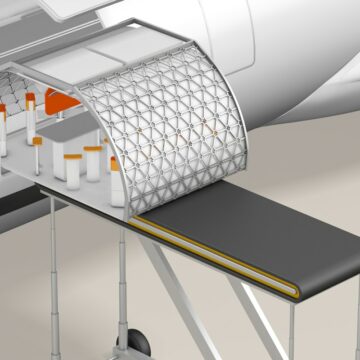There are countless amounts of shipping containers sailing and flying around the world continuously ever since their birth in 1950 with one simple purpose – to enable people to transfer unwieldy sized items from point A to point B. Shipping containers have been a groundbreaking innovation for them being interchangeable and thus able to be stacked on boats, trucks and trains. However, architects have seen potential to use shipping containers for something completely different.
Architects and constructors have fell in love with the strength, wide availability, and relatively low expense of the shipping containers. Some of them sell as little as $1000 and therefore make ridiculously cheap building material. Using the blocks is also more environmentally friendly than traditional building material and reusing something that already exists makes everything even better. This is the reason why architects are so excited to utilize shipping containers as housing for poorer people, such as students.
We also see people building houses out of containers. It is clever. A house is no longer different from any other product. In fact, containers make consistent and high-quality housing that can be built cheaply anywhere in less than a day. Montana based company Montainer offers “ready-to-move” containers for only $55,000 and almost zero stress, since they take care of all the permits to make a dream home reality.

Of course there is a downside for everything, even something as simple as a cargo container. First of all, used cargo containers are often covered with harmful chemicals to keep unwanted visitors away. To transform this to a livable house requires a lot of cleaning and therefore the containers used as housing blocks are often ordered brand new from China. So long sustainability. Furthermore, in order to make a container habitable all of the surfaces in the already tiny container needs to be insulated, which narrows the living space and leads to duplicate walls.
Shipping containers make quite clever material for block of flats, since they are designed to be stacked on top of one another. However, designing something more complex out of them can be complicating. The result is good and safe only when they are stacked on their corners, otherwise the structure needs to be duplicated with steel reinforcing. In addition to that, modifying and cutting holes to the material makes the entire structure to deflect and it needs to be reinforced again.
What shipping containers has got to offer is a cheap structure. Adding and removing things increases the cost and requires experts, so savings are minimal. But to be honest, they make pretty cool and unique housing, when done right.








